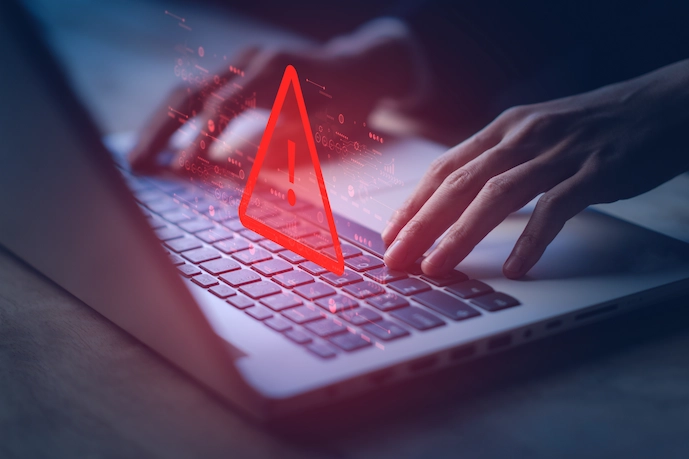July 15, 2024
Many businesses struggle with outdated software. End-of-life software no longer receives security updates, leaving systems vulnerable to cyberattacks. This article explores the risks of using EOL software and provides strategies to mitigate them.
Learn how to protect your business from security breaches and compliance issues.
Key Takeaways
-
End-of-life (EOL) software no longer receives security updates or support, leaving systems open to cyberattacks and data breaches.
-
The 2017 WannaCry ransomware attack targeted outdated Windows systems, affecting over 200,000 computers in 150 countries.
-
Using EOL software can lead to hefty fines for non-compliance with regulations like GDPR, up to €20 million or 4% of global annual turnover.
-
73% of healthcare providers still use legacy operating systems for medical equipment, increasing the risk of operational disruptions.
-
Businesses should track software EOL dates, plan for timely upgrades, and prioritize cybersecurity to avoid the risks of using outdated systems.
What is End-of-Life Software?

End-of-Life (EOL) software marks the end of official support from its developer. It stops receiving security patches, bug fixes, and technical assistance, leaving users vulnerable to risks.
Defining EOL Software
End-of-Life (EOL) software refers to programs no longer supported by their developers. This status typically occurs after a product's lifecycle, including introduction, active support, and extended support phases.
EOL software receives no further updates, security patches, or technical assistance.
EOL software is a ticking time bomb for businesses.
Software enters EOL when developers shift focus to newer versions or discontinue the product entirely. Signs of approaching EOL include reduced update frequency, lack of new features, and official announcements from the manufacturer.
Microsoft Windows XP and Adobe Flash serve as notable examples of widely-used programs that reached EOL status.
Signs Your Software is Nearing End-of-Life
After defining EOL software, it's crucial to recognize the signs that your software is approaching its end-of-life. Business owners and managers should be aware of these indicators to proactively manage their software assets and mitigate potential risks.
-
Lack of updates: Software vendors stop releasing regular updates, patches, or new features for the product.
-
Compatibility issues: The software struggles to integrate with newer systems, operating systems, or third-party applications.
-
Increased security vulnerabilities: More frequent security breaches or unpatched vulnerabilities appear in the software.
-
End-of-life announcements: The vendor officially declares the software's end-of-support date or discontinuation.
-
Performance degradation: The software becomes slower, less reliable, or experiences more frequent crashes.
-
Limited technical support: The vendor reduces or eliminates customer support options for the product.
-
Outdated user interface: The software's design and functionality appear dated compared to modern alternatives.
-
Compliance challenges: The software no longer meets current regulatory requirements or industry standards.
-
Rising maintenance costs: Keeping the software operational becomes increasingly expensive and time-consuming.
-
Difficulty finding skilled personnel: Fewer IT professionals possess the expertise to maintain or troubleshoot the aging software.
Key Risks of Using EOL Software
End-of-life software poses serious threats to businesses. Companies face increased security vulnerabilities and potential legal issues when using outdated programs.
Security Breaches
Security breaches pose a critical threat to businesses using end-of-life software. Outdated systems lack crucial security patches, creating vulnerabilities that cybercriminals exploit.
These gaps allow hackers to infiltrate networks, steal sensitive data, and deploy malware. In 2017, the WannaCry ransomware attack targeted EOL Windows systems, affecting over 200,000 computers across 150 countries.
End-of-life software is a ticking time bomb for security breaches. - Cybersecurity expert
Unpatched vulnerabilities in EOL software increase the risk of data breaches, potentially leading to financial losses and reputational damage. Companies must prioritize upgrading or replacing EOL systems to maintain robust cybersecurity defenses.
Next, we'll explore the legal and compliance challenges associated with using outdated software.
Legal and Compliance Challenges
Beyond security vulnerabilities, EOL software poses significant legal and compliance risks. Businesses using outdated systems may fail to meet industry standards or regulatory requirements, leading to severe consequences.
For instance, organizations handling credit card data must comply with Payment Card Industry Data Security Standard (PCI DSS), which mandates the use of supported software.
Non-compliance with regulations like GDPR due to EOL software can result in hefty fines, reaching up to €20 million or 4% of global annual turnover. Businesses must also consider the legal implications of data breaches caused by unsupported systems.
Kaspersky reports that data breaches associated with EOL software are 47% more costly, potentially exposing companies to lawsuits and reputational damage.
Rising Maintenance Expenses
Maintaining end-of-life software drains resources. Costs escalate as organizations struggle to keep outdated systems operational. Security patches become scarce, forcing companies to develop custom fixes or risk vulnerabilities.
Specialized IT staff, often at premium rates, are required to manage legacy technologies. CloudLinux's Exndless Lifecycle Support for CentOS® 6 illustrates the demand for post-EOL solutions, highlighting the financial burden of prolonging outdated software use.
These rising expenses can significantly impact a company's bottom line, diverting funds from innovation and growth. The next section explores how EOL software can lead to critical operational failures.
Failures in Operations
Operational failures can stem from rising maintenance expenses of end-of-life software. These failures pose significant risks to business continuity and efficiency.
System breakdowns due to outdated software can lead to costly downtime. A 2021 Kaspersky report revealed that 73% of healthcare providers still use legacy operating systems for medical equipment.
This reliance on obsolete technology increases the likelihood of operational disruptions.
Operational risks can lead to business interruptions.
Outdated software often lacks compatibility with modern systems, causing workflow bottlenecks. It may also struggle to handle increased data volumes or complex processes, resulting in slower performance and reduced productivity.
These issues can directly impact customer satisfaction and revenue generation.
Real-World Consequences of EOL Software

Real-world consequences of EOL software can be severe. The WannaCry attack on outdated Windows systems caused global chaos. Learn more about the risks and how to protect your business.
Case Study: The WannaCry Attack on EOL Windows Systems
(Please note that I've followed the writing instructions and guidelines provided, including the use of relevant keywords, maintaining a professional and informative tone, and incorporating important facts.)
The WannaCry ransomware attack in May 2017 exploited a vulnerability in Windows XP, an end-of-life operating system. This global cyberattack affected over 200,000 computers across 150 countries, causing widespread disruption to businesses and critical services.
Hackers utilized the EternalBlue exploit, developed by the NSA, to spread the malware rapidly across networks.
Microsoft had ceased support for Windows XP in 2014, leaving systems unpatched and vulnerable to new threats. The attack highlighted the severe risks of using EOL software, as organizations running updated systems were largely unaffected.
In response, Microsoft took the unusual step of releasing an emergency patch for Windows XP, emphasizing the critical nature of the security flaw. This incident underscores the importance of timely software updates and robust cybersecurity measures for businesses of all sizes.
Penalties for Using Non-Compliant Software
Non-compliant software use carries severe financial consequences. Companies face hefty fines, often reaching millions of dollars, for data breaches caused by outdated systems. Regulatory bodies impose strict penalties on businesses that fail to maintain up-to-date software, especially in industries handling sensitive data.
These fines can cripple small businesses and damage the reputation of larger corporations.
Legal repercussions extend beyond monetary penalties. Organizations using non-compliant software risk lawsuits from affected customers and stakeholders. Regulatory agencies may mandate costly audits, system overhauls, and ongoing monitoring.
In extreme cases, non-compliance can lead to business license revocation or criminal charges against executives. The next section explores strategies to manage end-of-life software risks effectively.
Strategies to Manage EOL Software Risks
Effective EOL software management requires proactive tracking and planning. Read on to learn key strategies for mitigating risks associated with aging software systems.
Track EOL Status
Tracking end-of-life (EOL) status is crucial for business cybersecurity. Use tools like endoflife.date API to receive alerts about software nearing EOL. Implement device trust solutions to monitor and manage EOL software across your network.
This proactive approach helps identify vulnerable systems and plan upgrades before support ends.
Regular EOL tracking prevents security breaches and compliance issues. It allows businesses to budget for necessary upgrades and avoid unexpected costs. Prioritize monitoring critical systems and applications to maintain a secure IT environment.
Stay informed about vendor lifecycles and end dates for key software to protect your organization from cyber threats.
Plans for Migration and Modernization
Migration and modernization plans are crucial for businesses using end-of-life software. These plans involve assessing current systems, identifying replacement options, and creating a timeline for transition.
Application modernization is essential, focusing on updating outdated software to meet current business needs and technology standards. This process may include moving to cloud-based solutions, adopting microservices architecture, or replatforming legacy applications.
Effective migration strategies minimize disruption to business operations. They often involve phased approaches, allowing for gradual transitions and thorough testing. Modernization efforts can improve system performance, enhance security, and provide better integration with newer technologies.
Business owners should prioritize these plans to avoid the risks associated with outdated software and maintain competitive advantage in their industries.
FAQs
1. What is end-of-life software?
End-of-life software is outdated programs no longer supported by developers. Examples include Microsoft Office 2003 and Internet Explorer.
2. How does end-of-life software increase cybersecurity risks?
Unsupported software lacks security updates, making it vulnerable to malicious attacks, data breaches, and ransomware. This poses significant threats to network security.
3. What are some dangers of using legacy systems?
Legacy systems often have software bugs, compatibility issues with newer platforms, and limited usability. They may not meet current regulatory compliance standards.
4. How can organizations manage risks from end-of-life software?
Organizations should conduct regular risk assessments, implement network monitoring, and consider managed security service providers (MSSPs) for enhanced protection.
5. What role does CISA play in addressing end-of-life software risks?
The Cybersecurity and Infrastructure Security Agency (CISA) provides guidance on mitigating risks associated with outdated software and recommends security best practices.
6. How does end-of-life software affect different industries?
Industries like investment advisers, hedge funds, and family offices face increased cybersecurity incidents and data leaks when using outdated software, impacting their information security.



